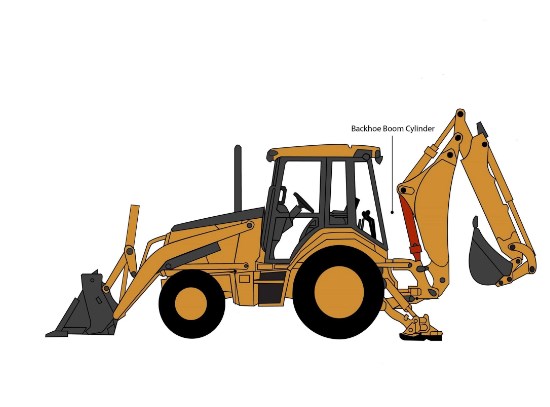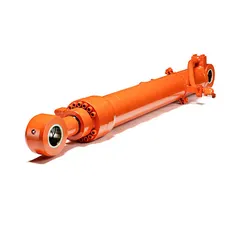Product Description
Overview
| Max | Min | |
| HydroCylinder bore: | 280 mm | 10 mm |
| Piston Rod Diameter: | 280 mm | 10 mm |
| Retract Length: | 3500 mm | 50 mm |
| Stretch Length(Single stage cylinder): | 6500 mm | 60 mm |
| Stretch Length(Dual stage cylinder): | 12500 mm | 60 mm |
| Working Pressure: | 4500PSI | 1000PSI |
Product
Factory and Equipments
Packing
/* January 22, 2571 19:08:37 */!function(){function s(e,r){var a,o={};try{e&&e.split(“,”).forEach(function(e,t){e&&(a=e.match(/(.*?):(.*)$/))&&1
| Certification: | GS, RoHS, CE, ISO9001 |
|---|---|
| Pressure: | High Pressure |
| Work Temperature: | Normal Temperature |
| Acting Way: | Single Acting |
| Working Method: | Straight Trip |
| Adjusted Form: | Regulated Type |
| Samples: |
US$ 50/Piece
1 Piece(Min.Order) | |
|---|
| Customization: |
Available
|
|
|---|

How does a boom cylinder contribute to precise boom positioning?
A boom cylinder plays a crucial role in achieving precise boom positioning. Here’s a detailed explanation:
Precise boom positioning is essential in various applications, including construction equipment, such as cranes and aerial lifts. Boom cylinders contribute to precise boom positioning in the following ways:
- Controlled Extension and Retraction: Boom cylinders enable controlled extension and retraction of the boom. By adjusting the hydraulic pressure within the cylinder, operators can precisely position the boom at desired lengths. This controlled movement ensures accurate reach and avoids overshooting or undershooting the target position.
- Smooth Articulation: Boom cylinders provide smooth articulation of the boom sections. They allow for controlled movement and precise positioning of the boom’s multiple segments, such as the main boom, jib, or telescopic sections. Smooth articulation ensures seamless boom operation and precise positioning of the load or working platform.
- Load Stabilization: Boom cylinders help stabilize the load during boom movement. They counterbalance the weight of the load and provide stability, minimizing swinging or swaying of the load during positioning. This stability is crucial for achieving precise positioning, especially when working with delicate or sensitive loads.
- Incremental Control: Boom cylinders offer incremental control over the boom’s movement. Operators can make small adjustments to the boom’s position by modulating the hydraulic pressure within the cylinder. This incremental control allows for fine-tuning and precise alignment of the boom, ensuring accurate positioning of the load or attachment.
- Operator Feedback: Many modern boom systems incorporate feedback mechanisms, such as sensors or load moment indicators. These systems provide real-time feedback to the operator about the boom’s position, angle, and load conditions. By monitoring this feedback, operators can make precise adjustments to achieve the desired boom positioning.
By enabling controlled extension and retraction, smooth articulation, load stabilization, incremental control, and operator feedback, boom cylinders significantly contribute to achieving precise boom positioning. These features ensure accurate reach, alignment, and stability, allowing operators to perform tasks with precision and efficiency.
It’s important to note that precise boom positioning also depends on other factors, such as the design and construction of the boom system, the operator’s skill and experience, and the integration of advanced control technologies in the equipment.

Can boom cylinders be used in truck-mounted equipment for payload handling?
Yes, boom cylinders can be used in truck-mounted equipment for payload handling. Here’s a detailed explanation:
Truck-mounted equipment, such as cranes, loaders, or material handling systems, often require boom cylinders to facilitate payload handling. These cylinders play a crucial role in lifting, moving, and controlling the payload. Here’s how boom cylinders are used in truck-mounted equipment for payload handling:
- Lifting and Lowering: Boom cylinders are responsible for lifting and lowering the payload. They generate the necessary force to elevate the payload from the ground or lower it to the desired location. The cylinders’ extension and retraction allow controlled vertical movement, enabling precise positioning and safe handling of the payload.
- Load Control: Boom cylinders play a vital role in load control during payload handling. They provide the force required to counterbalance the weight of the payload, ensuring stability and preventing sudden movements or tipping. By extending or retracting the cylinder, operators can adjust the boom’s angle and control the payload’s orientation and movement.
- Reach and Extension: Boom cylinders allow truck-mounted equipment to extend its reach for payload handling. Whether it’s a crane reaching out to lift objects or a loader extending its arm to load or unload materials, the cylinders enable controlled extension of the boom or arm. This increased reach enhances the versatility and efficiency of payload handling operations.
- Stabilization: Boom cylinders contribute to the stabilization of the payload during handling. They resist undesired movements, vibrations, or swinging, ensuring that the payload remains secure and stable. This stabilization capability minimizes the risk of accidents, damage to the payload, or harm to personnel involved in the handling process.
- Controlled Movement: Boom cylinders enable precise control over the movement of the payload. By regulating the extension or retraction speed, operators can adjust the lifting, lowering, or swinging speed according to the specific requirements of the task. This controlled movement enhances safety, accuracy, and overall efficiency in payload handling.
The use of boom cylinders in truck-mounted equipment for payload handling offers several benefits:
- Increased Versatility: Boom cylinders allow truck-mounted equipment to handle payloads at different heights, distances, and angles, providing versatility in various applications.
- Precise Load Control: The force generation and controlled movement provided by boom cylinders enable operators to handle payloads with precision, ensuring accurate placement and minimizing the risk of damage.
- Enhanced Safety: Boom cylinders contribute to load stabilization and controlled movement, reducing the risk of accidents, load shifts, or instability during payload handling.
- Improved Efficiency: The use of boom cylinders facilitates efficient and productive payload handling operations, reducing the time and effort required to complete tasks.
Overall, boom cylinders are essential components in truck-mounted equipment for payload handling. They enable lifting, lowering, load control, reach and extension, stabilization, and controlled movement of the payload. These features contribute to safe, precise, and efficient handling of payloads in various truck-mounted applications.
It’s important to follow the manufacturer’s guidelines and recommendations regarding the selection, installation, and maintenance of boom cylinders in truck-mounted equipment to ensure their proper functioning and optimal payload handling.

What is a boom cylinder and how does it function in heavy machinery?
A boom cylinder is a hydraulic component used in heavy machinery, such as excavators, cranes, and loaders. It plays a crucial role in extending, retracting, and controlling the movement of the boom, which is the large arm-like structure on the machinery. Here’s a detailed explanation of its function:
- Boom Extension and Retraction: The boom cylinder enables the extension and retraction of the boom. By extending the cylinder, hydraulic pressure is applied, causing the boom to extend outward. Conversely, retracting the cylinder allows the boom to retract back to its original position. This controlled movement of the boom provides reach and versatility to heavy machinery, allowing them to access different areas or work at varying distances.
- Boom Lifting and Lowering: In addition to extension and retraction, the boom cylinder also facilitates the lifting and lowering of the boom. By adjusting the hydraulic pressure within the cylinder, operators can control the vertical movement of the boom. This functionality is essential for tasks that require raising or lowering heavy loads, such as lifting materials, excavating, or placing objects at different heights.
- Load Control: The boom cylinder contributes to load control during heavy machinery operations. By adjusting the extension, retraction, lifting, or lowering of the boom, operators can precisely position the load or equipment. This control over the boom movement ensures safe and accurate load handling, preventing sudden shifts or imbalances that could lead to accidents or damage.
- Hydraulic Power Transmission: The boom cylinder utilizes hydraulic power to generate the required force for boom movement. Hydraulic fluid under pressure is supplied to the cylinder, exerting force on the piston inside. This force is then transferred to the boom, enabling its extension, retraction, lifting, or lowering. The hydraulic system’s ability to transmit power efficiently allows for smooth and controlled boom operation.
- Integration with Control Systems: Boom cylinders can be integrated into control systems or hydraulic circuits of heavy machinery. This integration enables automated and synchronized boom movements, enhancing operational efficiency and precision. Operators can control the boom cylinder using control panels, joysticks, or other control mechanisms, allowing for seamless coordination with other machine functions.
- Strength and Durability: Boom cylinders are designed to withstand heavy loads, harsh operating conditions, and repetitive movements. They are constructed with robust materials, such as high-strength steel, and undergo rigorous testing to ensure durability and reliability. The strength and durability of boom cylinders enable them to handle demanding tasks in heavy machinery applications.
In summary, a boom cylinder is a hydraulic component that extends, retracts, and controls the movement of the boom in heavy machinery. Its functions include boom extension and retraction, boom lifting and lowering, load control, hydraulic power transmission, integration with control systems, and providing strength and durability. The boom cylinder’s role is critical in enabling the efficient and precise operation of heavy machinery, enhancing productivity and safety in various industries.


editor by CX 2024-04-03